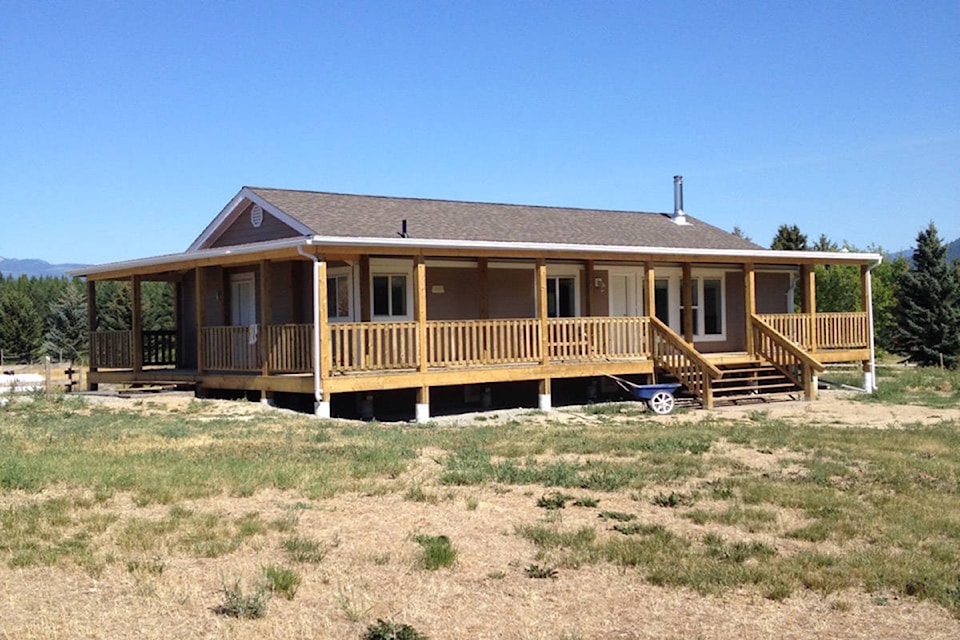PART 1
(This story begins a four-part series about how a newcomer to the Creston Valley thought she was doing everything by the book when she contracted to have a covered deck built on the south and east sides of her new home in Lister. This story replaces the one printed in the March 15 Advance, in which the original unedited draft (subsequently amended several times) was incorrectly used. We apologize for this error, and for having become another contributor to Ms. Eyben’s tribulations.)
It isn’t difficult to see why Lori Eyben fell in love with a twenty-acre property in Lister when she decided to relocate from Alberta. The site was sprawling with dramatic views to the south, east, north, and the Skimmerhorn mountain range across the valley provides a giant natural mural from her kitchen and living room windows.
Eyben purchased the undeveloped property on her visit to Creston late in 2013 and began preparations to make the move. She had the necessary infrastructure put in place, and a foundation was readied for a new modular home, which was delivered in two sections. The one-time farmer had plans for a small barn doubling as a garage, but her first priority would be the construction of a covered deck that would wrap around the south and east sides of the home, allowing her to enjoy the morning sun and afternoons in the comfort of shade.
She had very few connections in the Creston Valley but had made the acquaintance of a couple who recommended a fellow who had construction experience and had done some work for them. She was aware at the time that he was also the couple’s relative so she trusted their recommendation.
Eyben met with the contractor (not licensed and not a journeyman) and explained what she wanted done. He set about taking measurements to prepare working drawings and a materials list, with a cost estimate. While she had no particular knowledge about building codes she, had one definite requirement—no attachments could be made to the modular home. That could void the building’s warranty.
There was the usual back and forth between owner and contractor. He had proposed a roof pitch that would have resulted in a restriction of her views. She would have had to duck down inside the house to see the top of the Skimmerhorns. He scaled back the roof pitch to a 1-inch rise over a 12-inch distance. His plan also called for 2x4 rafters on 24-inch centres for the metal-clad roof, which would cover the 8-foot wide deck. Those last two specs would raise the eyebrows of any reasonably experienced builder. More about that later.
Building-Plumbing Permit No. BP022284 was issued by the RDCK “Building Official” (commonly referred to as “building inspector”) on June 5, 2015. The permit noted that the applicant would be responsible to request three inspections: one when the site was prepared and the concrete footings were in place; a second when the framing was complete; and a final inspection upon completion of the project.
After making a down payment for the work, Eyben would pay the contractor in stages, after the first two inspection approvals.
Work was soon underway, and the initial inspection was ordered. On June 24, 2015, the Building Official signed off on the site preparation and concrete footings: “Accepted.”
Just over a month later the Building Official was back to inspect the framing construction. “Anchorage of building frame,” “Beam end bearing” and “Other” (post, beam, floor and roof framing) were all listed as “Accepted” in a report signed on July 27, 2015.
Her relationship with the Building Official was friendly and she found him easy to get along with.
Then things began to go sideways.
Next week: Two approved inspections from the RDCK Building Official were not a foreshadowing of what was to come in the project’s final inspection.
